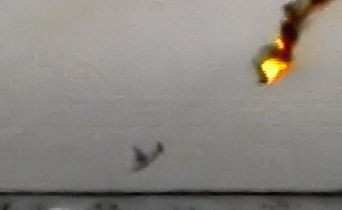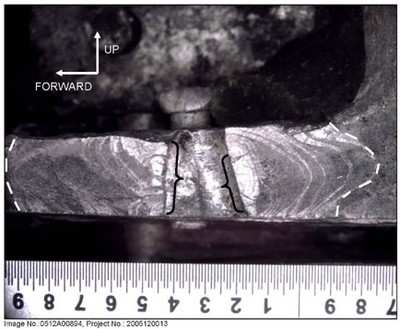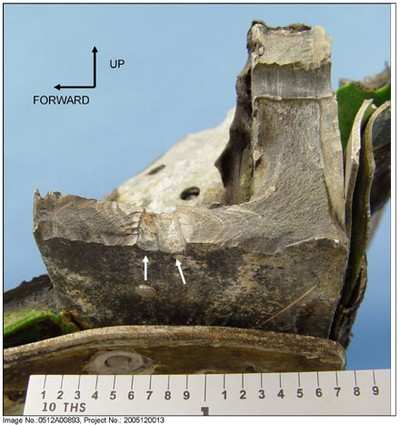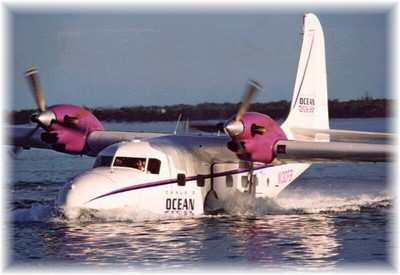Board Says FAA Failed To Fix Problems With Airline's
Maintenance Program
 The National Transportation Safety
Board issued its Probable Cause report Wednesday on the December
2005 loss of a seaplane in Miami, FL. The Board ruled the fatal
crash was caused by "the failure and separation of the right wing,
which resulted from (1) the failure of Chalk's Ocean Airways'
maintenance program to identify and properly repair fatigue cracks
in the wing, and (2) the failure of the Federal Aviation
Administration (FAA) to detect and correct deficiencies in the
company's maintenance program."
The National Transportation Safety
Board issued its Probable Cause report Wednesday on the December
2005 loss of a seaplane in Miami, FL. The Board ruled the fatal
crash was caused by "the failure and separation of the right wing,
which resulted from (1) the failure of Chalk's Ocean Airways'
maintenance program to identify and properly repair fatigue cracks
in the wing, and (2) the failure of the Federal Aviation
Administration (FAA) to detect and correct deficiencies in the
company's maintenance program."
As ANN reported, on December
19, 2005, a Grumman Turbo Mallard (G-73T) amphibious airplane, on a
regularly scheduled passenger flight to Bimini, Bahamas,
experienced an in-flight separation of its right wing from the
fuselage and crashed into the shipping channel adjacent to the Port
of Miami shortly after takeoff. Two flight crewmembers and 18
passengers on board were killed; the airplane was destroyed by
impact forces.
"This accident tragically illustrates a gap in the safety net
with regard to older airplanes," said NTSB Chairman Mark V.
Rosenker. "The signs of structural problems were there -- but not
addressed. And to ignore continuing problems is to court
disaster."
The Board found neither the performance nor the appearance of
the airplane would have provided a warning to the flight crew of
the right wing's imminent failure. The accident airplane,
manufactured in 1947, was operating within its certificated design
envelope and carrying normal aerodynamic loads when the wing
separated. Preexisting damage to wing structural components would
not have been visible to the flight crew prior to departure. There
was nothing the crew could have done to regain control of the
airplane after the in-flight separation of the wing, the Board
said.

The Board noted that the accident airplane had a history of
recurring fuel leaks near the area where the right wing separated,
that were indicators of internal structural damage. Although some
repairs were attempted, many were ineffective in that they did not
properly restore the load-carrying capability of the wing
structure. The failure of Chalk's to identify and properly repair
fatigue cracks in the wing, and the numerous maintenance-related
problems found on the accident airplane and another company
airplane, demonstrated that Chalk's maintenance program was
inadequate to maintain the structural integrity of the company's
fleet, the Board said.

The Board also noted that because of the limited availability of
engineering services and manufacturer support for the G-73T
Mallards, effective FAA oversight was important to maintain the
airworthiness of these older airplanes. Although FAA oversight was
performed in accordance with existing federal regulations, the
Board said, it did not result in the detection and correction of
the systemic deficiencies in Chalk's maintenance program and,
therefore, was insufficient to ensure the safety of the airline's
operations.

As a result of the investigation, the Board issued two new
safety recommendations calling on the FAA to: verify that airline
maintenance programs include stringent criteria to address
recurring or systemic problems, if necessary through comprehensive
engineering evaluations; and, to modify procedures for oversight of
maintenance programs of carriers like Chalk's to ensure the
continued airworthiness of the operator's fleet.
Since the FAA has indicated that it intends to address the
identification of age-related problems for older airplanes through
current operational safety programs -- instead of a dedicated
effort -- the Board has classified this recommendation as
"Open-Unacceptable Response."

"Does it make sense," said Chairman Rosenker, "that rules
designed to deal with the problems of airplanes as they age would
exclude the oldest ones in the inventory?"
A synopsis of the Board's report, including the probable cause
and safety recommendations, is available on the NTSB website.
 ANN's Daily Aero-Linx (04.13.24)
ANN's Daily Aero-Linx (04.13.24) ANN's Daily Aero-Term (04.13.24): Beyond Visual Line Of Sight (BVLOS)
ANN's Daily Aero-Term (04.13.24): Beyond Visual Line Of Sight (BVLOS) Airborne 04.09.24: SnF24!, Piper-DeltaHawk!, Fisher Update, Junkers
Airborne 04.09.24: SnF24!, Piper-DeltaHawk!, Fisher Update, Junkers Aero-News: Quote of the Day (04.14.24)
Aero-News: Quote of the Day (04.14.24) ANN's Daily Aero-Term (04.14.24): Maximum Authorized Altitude
ANN's Daily Aero-Term (04.14.24): Maximum Authorized Altitude







